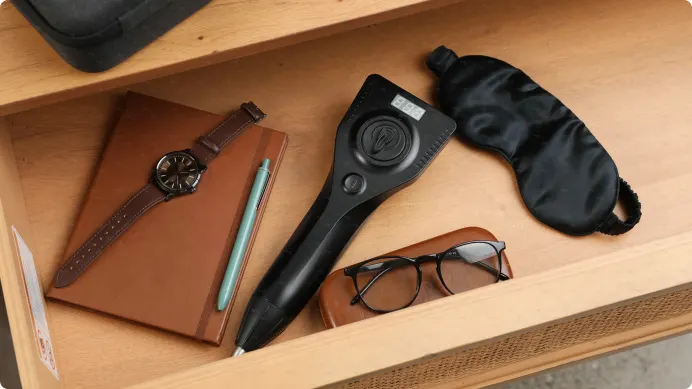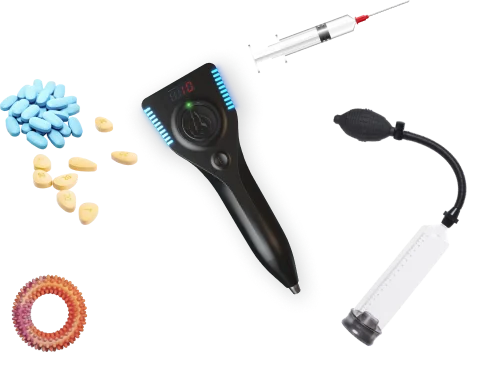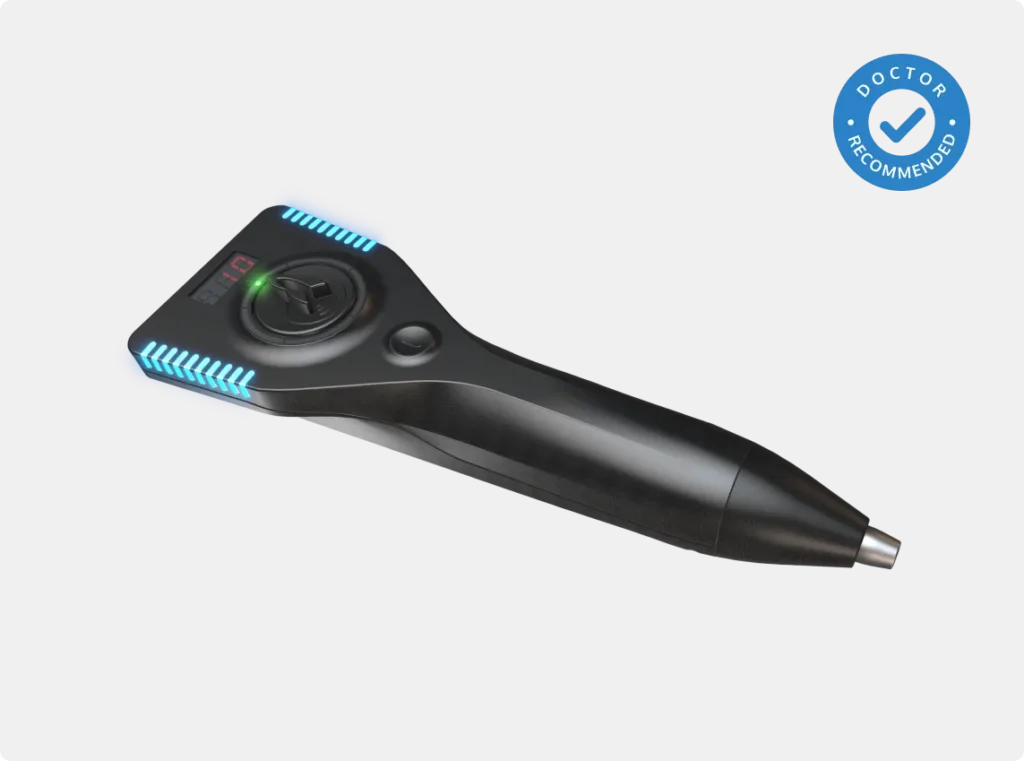Phoenix Device Review 2024: The Future of At-Home ED Treatment?
Last Updated: January 2024 | Medically Reviewed by: Dr. John Smith, Urologist
Get Your Free Personalized Sexual Health Report
Answer a few quick questions and receive instant, personalized insights about your sexual health – no doctor visit required!
Start 2-Minute AssessmentIntroduction
Erectile Dysfunction (ED) affects millions of men worldwide, impacting not just their physical health but also their emotional well-being and relationships. While traditional treatments like oral medications have been the go-to solution for years, they often come with side effects and don’t address the root cause of ED. Enter the Phoenix device – a revolutionary at-home treatment that promises to change the landscape of ED therapy.
In this comprehensive review, we’ll dive deep into what the Phoenix device is, how it works, and whether it lives up to its promises. We’ll examine clinical evidence, user experiences, and expert opinions to give you a well-rounded view of this innovative treatment option.
What is the Phoenix Device?
The Phoenix is an FDA-registered Class 1 medical device designed for at-home treatment of erectile dysfunction. It utilizes low-intensity extracorporeal shockwave therapy (Li-ESWT), a technology that has been used in clinical settings for years. The device aims to improve erectile function by stimulating blood vessel growth and tissue regeneration in the penis.
Unlike traditional ED treatments that focus on temporary solutions, the Phoenix targets the underlying causes of ED, potentially offering longer-lasting results. It’s designed to be easy to use, allowing men to administer treatments in the privacy of their own homes without the need for ongoing doctor visits or prescriptions.
How It Works
- The device emits low-intensity shockwaves into the penile tissue.
- These shockwaves create micro-traumas in the blood vessels and surrounding tissue.
- The body responds by increasing blood flow and stimulating the growth of new blood vessels.
- Over time, this process can lead to improved erectile function and overall penile health.
The recommended treatment protocol typically involves using the device 2-3 times per week for 6-12 weeks. Many users report seeing improvements within the first few weeks, with optimal results often achieved after completing the full treatment course.
Clinical Evidence
- A 2019 meta-analysis published in the Journal of Sexual Medicine found that Li-ESWT resulted in significant improvements in erectile function scores.
- A 2018 study in the World Journal of Men’s Health reported that 70% of participants showed improvement in erectile function after Li-ESWT treatment.
- Research published in Therapeutic Advances in Urology in 2020 suggested that Li-ESWT could be an effective treatment for ED, especially for those who don’t respond well to PDE5 inhibitors like Viagra.
Pros and Cons
Pros
- Non-invasive treatment
- Can be used at home
- No known side effects
- One-time purchase (no ongoing medication costs)
- Addresses root cause of ED
- May improve overall penile health
- No prescription required
Cons
- Significant upfront cost
- Results may take time to manifest
- Requires consistent use over several weeks
- May not work for all types of ED
- Limited long-term data on at-home use
- Not covered by most insurance plans
Still unsure if the Phoenix is right for you?

Take our quick assessment to receive personalized recommendations based on your specific situation.
Get Your Free Assessment NowUser Testimonials
“I was skeptical at first, but after using the Phoenix for 8 weeks, I’ve noticed a significant improvement in my erections. It’s given me back my confidence in the bedroom.”
– John D., 52
“The Phoenix has been a game-changer for me. No more worrying about taking pills before intimacy. The results have been gradual but very noticeable.”
– Michael S., 45
“After prostate surgery, I thought my sex life was over. The Phoenix has helped me regain function I thought I’d lost forever. It’s not perfect, but it’s a massive improvement.”
– Robert L., 60
Safety Information
The Phoenix device has been designed with user safety in mind and is FDA-registered as a Class 1 medical device. This classification indicates that it poses a low risk to users when used as directed. However, it’s important to consider the following safety information:
Contraindications:
The Phoenix device should not be used by individuals with certain medical conditions, including:
- Active infections or inflammation in the treatment area
- Blood clotting disorders
- Penile implants or other surgical modifications
- Certain types of cancer
Potential Side Effects:
While rare, some users may experience:
- Mild discomfort or tingling during treatment
- Temporary redness or bruising in the treatment area
- Skin irritation
Remember, while the Phoenix device is designed for home use, it’s still a medical device. If you experience any unexpected side effects or concerns during use, discontinue treatment and consult your healthcare provider.
Cost Analysis
| Treatment | Initial Cost | Ongoing Costs | Notes |
|---|---|---|---|
| Phoenix Device | $849 (one-time) | None | Can be used for multiple treatments over years |
| Oral ED Medications | $10-$70 per dose | Ongoing prescription costs | Costs vary widely; generic options available |
| In-Clinic Shockwave Therapy | $3000-$5000 per series | Potential maintenance treatments | Typically requires 6-12 sessions |
While the Phoenix device has a higher upfront cost, it can be more cost-effective in the long run, especially for men who would otherwise rely on ongoing medication or repeated in-clinic treatments.
Comparison with Other ED Treatments

| Feature | Phoenix Device | Oral Medications | In-Clinic Shockwave |
|---|---|---|---|
| Treatment Location | At-home | At-home | In-clinic |
| Invasiveness | Non-invasive | Non-invasive | Non-invasive |
| Addresses Root Cause | Yes | No | Yes |
| Time to See Results | Weeks to months | Within hours | Weeks to months |
| Ongoing Costs | None | Yes | Potential maintenance |
Ready to take the next step?
Find out if the Phoenix device is the right choice for you with our personalized assessment.
Take the 2-Minute Quiz NowFrequently Asked Questions
How long does it take to see results with the Phoenix device?
While individual experiences may vary, many users report noticing improvements within 4-6 weeks of consistent use. Optimal results are typically achieved after completing the full 6-12 week treatment protocol.
Is the Phoenix device painful to use?
Most users describe the sensation as a mild tingling or vibration. The device is designed to be comfortable, and the intensity can be adjusted. If you experience any pain, you should stop use and consult a healthcare professional.
Can I use the Phoenix device if I have a pacemaker or other medical implant?
It’s crucial to consult with your healthcare provider before using the Phoenix device if you have any medical implants or conditions. While the device is generally considered safe, certain medical conditions may contraindicate its use.
How does the Phoenix compare to in-clinic shockwave treatments?
The Phoenix uses similar technology to in-clinic treatments but at a lower intensity, allowing for safe at-home use. While in-clinic treatments may be more powerful, the Phoenix allows for more frequent treatments and greater convenience.
Is there a money-back guarantee?
The manufacturer offers a 60-day money-back guarantee. If you’re not satisfied with the results, you can return the device for a full refund within this period.
Conclusion
The Phoenix device represents an innovative approach to treating erectile dysfunction, offering the potential for improved sexual health without the ongoing costs and potential side effects of traditional medications. Its at-home usability and focus on addressing the root causes of ED make it an attractive option for many men.
However, it’s important to remember that results can vary, and the device requires a commitment to consistent use over several weeks. While the upfront cost may be significant, it could prove to be a cost-effective solution in the long run, especially for those who have found limited success with other treatments.
Ultimately, the decision to try the Phoenix should be made in consultation with a healthcare provider, taking into account your individual health status, the severity of your ED, and your treatment goals.
Still unsure if the Phoenix is right for you?
Take our quick, confidential assessment to receive personalized recommendations based on your unique situation.
Get Your Personalized Recommendation


